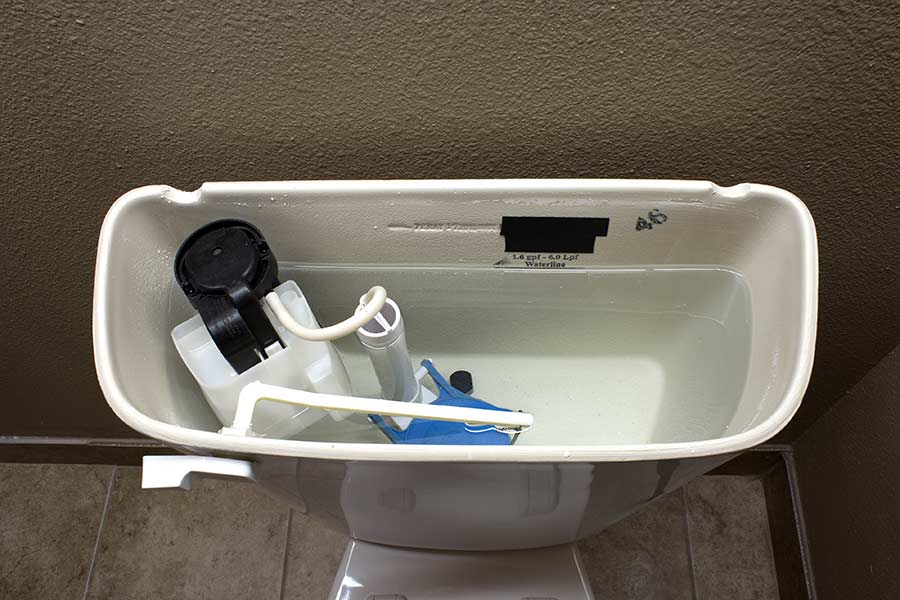As you might expect from the name, a gravity-fed (or gravity-flush) toilet uses the force of gravity to move water and waste out of the bowl. This type of toilet is essentially a bare-bones model compared to more intricate and pressure-assisted toilets. Even so, this humble toilet continues to be popular today so let’s take a closer look at how it works.
Using a Gravity-Fed Toilet
Odds are that you have a gravity-fed toilet in your home. When you have a chance, go ahead and lift up the lid on the tank. You will see the simplicity of how this toilet works. Inside the tank is a flush lever that is attached to a sort of chain. That chain goes down to the bottom of the tank where it connects to the flapper valve. On the outside of the tank is the flusher handle and when you push it down, it sets those components in motion.
Once the flusher handle is pushed down, the lever pulls the chain up, which lifts the flapper valve and exposes an opening at the bottom of the tank. The force of gravity pushes the wastewater in the bowl through the toilet trap (the piping) and into a drainage system. Then the wastewater can travel to a municipal sewage system.
Benefits and Features
One of the primary benefits of this kind of toilet is that it is straightforward and simple. There are fewer moving parts, which means easier repairs and less labor involved. This type of toilet should not be too difficult for DIY repair jobs either. In addition, if maintenance or repairs are needed, they are typically much less expensive than what it would cost to fix other types of toilets.
On the other hand, there are some common issues associated with a gravity-fed toilet, although they are quite easy to fix once you understand. For one, the flusher handle may go down but the toilet does not flush. This is most likely because the chain attached to the flapper and lever has come undone or loose on one end. It is either disconnected from the lever or the flapper so just lift the tank lid and check it out, you should be able to reattach the chain.
In addition, the chain may have too much slack (it is too long) and therefore you are not getting a good flush. All you need to do is tighten the chain by attaching it to the lever via a lower rung. That should get rid of the slack and restore order to your toilet.
A Brief History of Gravity-Fed Toilets
These types of toilets have been around for hundreds of years. They typically release a few liters of water from the tank and the curvy shape of the piping is meant to protect against fecal-related diseases. Moreover, the force of water from each flush causes a sucking effect, which is why the wastewater goes down the drain. It was not until the early 1990s that President George H.W. Bush enacted the Energy Policy Act, which limited the amount of water that these toilets could use. Toilets were limited to six liters or less of water tank usage.
The low-flush variety of gravity-fed toilets was not a huge hit at first. Over time, manufacturers made changes to the design to appease consumers. Things such as wider flush valves and bigger trapways were added to help these toilets thoroughly remove waste. Even so, these toilets could not always perform as well as expected, which ushered in the pressure-assisted toilet.
While you probably won’t remember all of this the next time that you visit the bathroom, it’s good to know for future reference.

